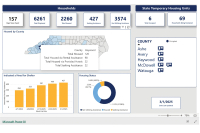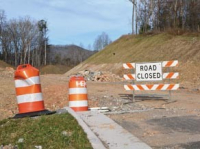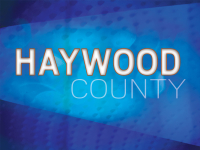Preserving craft and livelihood: Successful Quilt Trails of WNC coming soon to Haywood, Macon
By Julia Merchant • Contributing Writer
Take a drive through the countryside of Western North Carolina, and you’ll likely notice brightly colored squares adorning the sides of barns and other rustic structures. Look closer, and they’ll tell you a story about that place.
“Turkey tracks,” for instance, hangs on the side of a barn where a flock of turkeys come for their morning meal. “Bard of Avon” graces the side of the Parkway Playhouse in Burnsville. Nearby, “Monkey wrench” pays tribute to a local resident well-known for his fix-it abilities.
The blocks are actually quilt patterns, carefully selected to honor the history behind the structures and homesteads they grace. It’s all part of the Quilt Trails of Western North Carolina project, and soon, it will expand to include Macon and Jackson counties, the first west of Asheville to take part. In the six counties where the project currently exists, it’s grown to involve the entire community in preserving both local history and the heritage craft of quilting. But it’s also become much more — an important economic development tool for all of Western North Carolina.
“It’s a community history project, basically,” says Barbara Webster, executive director of Quilt Trails of WNC. “We are capturing the stories of the land, the people, and the buildings with this project, and in so doing, we are building community and creating economic development for the area.”
First introduced to WNC in 2006, the Quilt Trails project has grown to include 158 quilt blocks hanging on barns and businesses in Mitchell, Yancey, Ashe, Madison, Watauga and Avery counties. Each features a different quilting pattern that is representative of its location. Volunteers build and paint the blocks, and write stories that reflect the heritage of each place. Building a block can take anywhere from three weeks for a simple pattern to nine months for a more complicated one.
Related Items
Webster, who resides in Mitchell County, has seen her county become a model of success. Along with Yancey, Mitchell boasts the highest concentration of quilt blocks in the entire nation, a feat accomplished in just three short years. The project has achieved an amazing amount of community buy-in.
“The entire community has embraced it,” Webster says.
Kids from the local high school art department paint blocks alongside senior citizens. Volunteers take pictures and write stories about each block. A history teacher takes kids out to photograph the blocks in order to learn about the history of the county. A calculus class uses them to learn about symmetry.
Webster believes tying a story to each block, an aspect of the project unique to Mitchell and Yancey counties, played a large role in sparking community interest. On the application form for a quilt block, there’s a space for the applicant to describe their family history or something interesting about the building or land.
“We use that information to hunt for the prefect quilt block that will trigger their story,” Webster explains. “That’s what made such a big difference in our county — when people saw they could capture their family story this way.”
Tourism booster
Along with local history, the Quilt Trails project is preserving something on a larger scale — the region’s economy. In an area that has struggled to cope with the loss of industry in recent years, the Quilt Trails project has become a key component in the growth of a newer, tourism-based economy.
“It’s amazing what’s happened here because of the quilt blocks,” says Webster. “People are coming from all over the place to see them.”
A recent Wall Street Journal article that profiled Quilt Trails of WNC drew a flood of tourists, “from Maine to Mexico,” Webster says. The visitors are sure to keep coming — the project was selected by the state Department of Tourism as one of 10 state tourist attractions that will appear in a series of radio spots broadcast throughout the Southeast.
“It’s a wonderful example of taking cultural heritage and turning it into a contemporary experience,” says Handmade In America executive director Geraldine Plato of why the project works. “It appeals to a lot of different people. They can get in a car, drive around, read the quilts, and maybe learn something else about the town.”
Webster estimates that one group of 15 people coming to see the blocks contributes an average of $3,000 to the county in one day.
The economic impact ripples throughout the community, thanks largely to the collaborative nature of the project. It seems everyone’s involved — local artists, for instance, are employed to craft pins that resemble the quilt squares, and local businesses sell copies of the one that hangs on their storefront. Maps of the quilt block trails also point visitors to local attractions, like a nearby organic farm.
“We realized fast this could be an economic development engine for the county,” says Webster. “We’ve purposefully gone in that direction, and it’s worked.”
Though Quilt Trails of WNC is currently only in six counties, it’s benefited the region as a whole.
“We’ve used this as a way to market the entire western part of the state as a tourist destination,” says Webster.
As the project expands, Webster hopes counties will work together to promote each other. Say there’s a quilter’s convention in Haywood County — guests could take a daytrip to see the quilt blocks in Yancey County, for instance.
“We could put these packages together and involve multiple counties,” says Webster. “There’s a huge opportunity here.”
Plato thinks Quilt Trails of WNC has tapped into something.
“It’s a beautiful way to pull together the whole region,” Plato says.
Coming soon
Soon, quilt squares will be popping up in the far western counties. Volunteers in Macon County are busy painting the first four blocks, one of which will hang in the Chamber of Commerce.
“It’s underway, and hopefully we’ll be able to see the first things going up before winter,” says Linda Harbuck, executive director of the Franklin Chamber of Commerce.
The project seems particularly fitting in Macon County, which boasts a proud quilting tradition. The now-defunct Maco Crafts Cooperative created the World’s Largest Quilt, which hung at the 1982 World’s Fair in Knoxville, as well as the World’s Largest Quilted Wall Hanging.
Harbuck hopes the project will bring a renewed interest in the craft.
“I think it will help preserve tradition, and I think it may bring it back into the light again too,” she says.
The quilt squares, and the stories that accompany them, could also draw a different demographic of visitors to the area.
“It will bring in a new group that might not have necessarily come before,” Harbuck says.
Led by the local Arts Council, Haywood County is also looking to become part of WNC Quilt Trails. Arts Council Director Kay S. Miller says already, the project is sparking interest from a cross-section of community members, both new and native.
“The excitement is coming from people who were born and raised here, not just those who moved to the county,” Miller says. “Hopefully, it will bring together residents in various communities across Haywood County to gain more satisfaction and pride in the heritage we share.”
The first quilt blocks will be hung in Haywood in June 2010. Miller encourages everyone — young or old, artistic or not — to get involved.
“You don’t have to have an art degree to be involved in this project,” Miller says. “Again, that’s the beauty of (it) — schoolchildren and adults alike can participate. There are many phases of the project, and all levels of skill are needed.”









